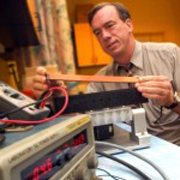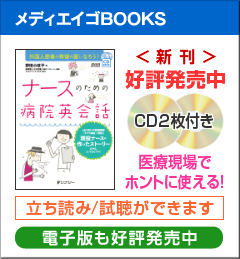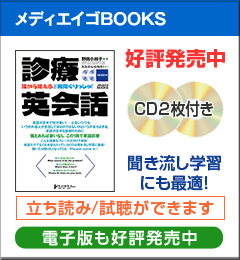
振動が骨の老化を防止
News Release from Medical College of Georgia on October 25, 2010.

© Medical College of Georgia
研究を行ったKarl H. Wenger博士
毎日,一定の時間,全身を振動させることで老化による骨密度の低下が防げるかもしれない。人間の55~65歳に当たる雄のマウスの全身を12週間にわたり1日30分,特定の強度で振動させたところ,骨密度低下が食い止められていることを示唆する結果が得られた。特に股関節周辺の骨密度が改善を示し,大腿骨でも密度が高くなる傾向が見られた。遺伝子発現の初期段階である転写を調節する転写因子が放出し,骨を形成する骨芽細胞の産生が促されたためと考えられる。高齢者で重篤な障害や死亡につながりうる股関節骨折などの予防に応用できそうだ。(吉田素子)
A daily dose(1) of whole body vibration(2) may help reduce the usual bone density(3) loss that occurs with age, Medical College of Georgia researchers(4) report.
Twelve weeks of daily, 30-minute sessions in 18-month old male mice(5) -- which equate to(6) 55- to 65-year-old humans -- appear to forestall(7) the expected(8) annual loss that can result in(9) fractures(10), disability(11) and death. Dr. Karl H. Wenger, biomedical engineer(12) in the MCG(13) Schools of Graduate Studies and Medicine, reported the findings with his colleagues(14) in the journal Bone.
Researchers found vibration improved density around the hip joint(15) with a shift toward higher density in the femur(16), the long bone of the leg, as well. Hip fractures(17) are a major cause of disability and death among the elderly.
They also found a reduction in a biomarker(18) that indicates bone breakdown and an increase in the surface area(19) involved in(20) bone formation(21) in the vibrating(22) group.
The findings provide more scientific evidence that the technique, which dates back to(23) the 1800s and is now showing up(24) in homes, gyms and rehabilitation(25) clinics, has bone benefit(26), particularly as a low-risk(27) option for injured individuals with limited mobility(28), Wenger said.
The scientists theorize that(29) the rhythmic(30) movement, which produces a sensation similar to that of a vibrating cell phone(31) but on a larger scale(32), exercises(33) cells(34) so they work better. Vibration prompts(35) movement of the cell nucleus(36), which is suspended(37) by numerous(38) threadlike(39) fibers(40) called filaments(41). “The filaments get all deformed(42) like springs(43) and then they spring back(44),” Wenger said.
(1) 量 (2) 振動 (3) 骨密度 (4) 研究者 (5) マウス (6) ~と同じである (7) くい止める (8) 予期された (9) ~をもたらす (10) 骨折 (11) 障害 (12) 生物医工学者 (13) ジョージア医科大学(Medical College of Georgiaの略) (14) 同僚 (15) 股関節 (16) 大腿骨 (17) 股関節骨折 (18) バイオマーカー (19) 表面積 (20) ~に関与した (21) 骨形成 (22) 振動を受けた (23) ~まで遡る (24) 見られる (25) リハビリテーション (26) 骨に効果がある (27) 危険の少ない (28) 運動制限のある (29) ~と理論を立てている (30) リズミカルな (31) 携帯電話 (32) より大きな規模で (33) 運動させる (34) 細胞 (35) 引き起こす (36) 細胞核 (37) つるされている (38) 多数の (39) 糸のような (40) 線維 (41) フィラメント (42) (get ~)変形される (43) バネ,スプリング (44) 跳ね返る


